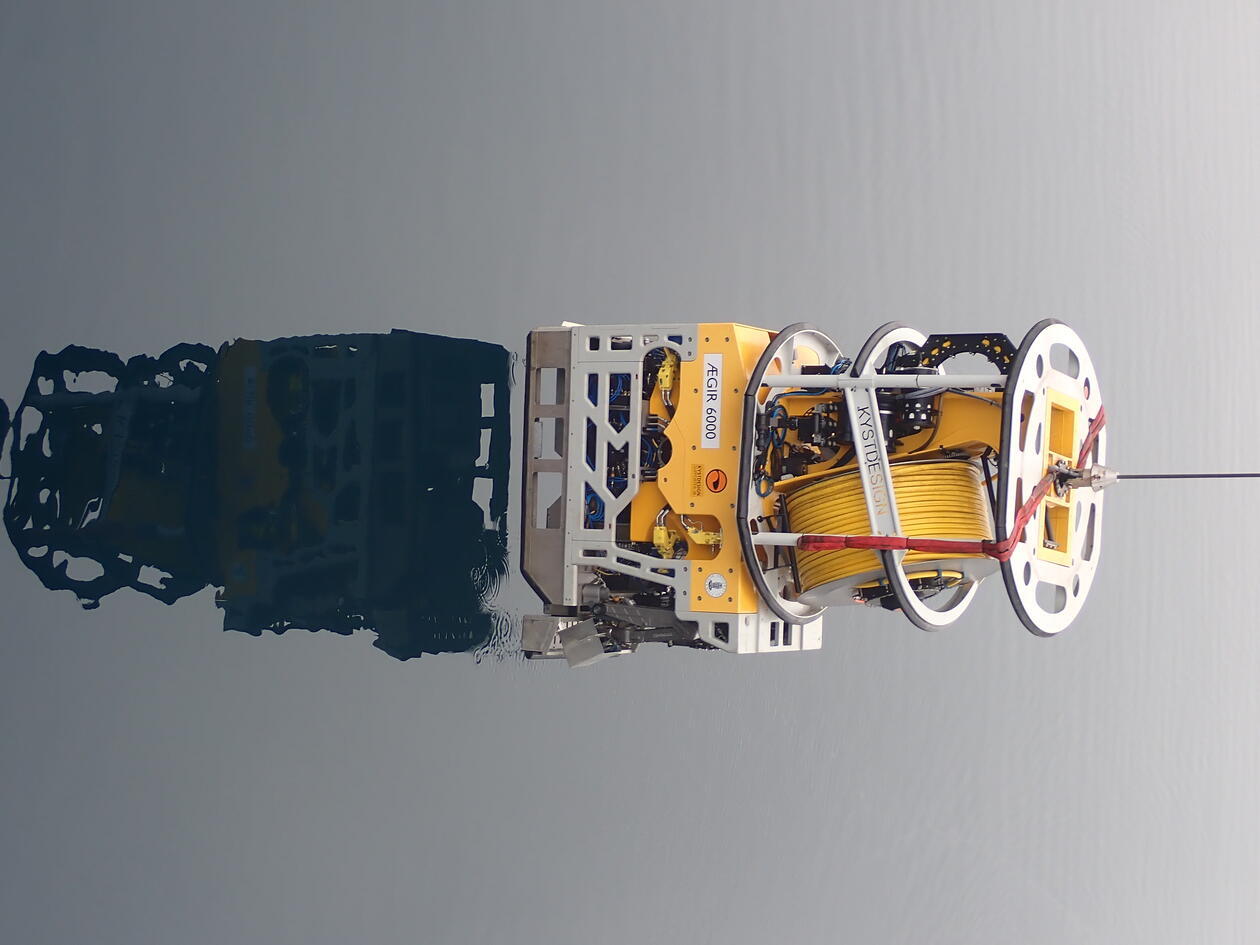Research themes
Research activity at the Center for Deep Sea Research is organised into 5 research themes. These themes are tightly interconnected, multidisciplinary, and designed to translate knowledge from fundamental to applied research.
Main content
The five themes are:
Theme 1 - From mantle to fluid
From mantle to fluid
This theme focuses on the driving forces, mechanisms and consequences of fluid-rock interactions along mid-oceanic ridges. These dynamic environments present a unique interplay between magmatic activity, plate tectonic and reactive fluids that drives large-scale fluxes of mass and energy, as well as modify the physical and chemical characteristics of the oceanic lithosphere.
Main objectives: The group aims at developing a quantitative understanding of the fluid-rock interaction processes along (ultra-) slow spreading ridges. This can be divided in 3 sub-objectives:
- Understand the feeback of oceanic crust forces on hydrothermal fluid flow dynamics.
- Constrain the timescale of fluid-rock interactions.
- Quantify the influence of fluid-rock interactions on organic and inorganic material during the fluid circulation between the oceanic crust and the overlaying water column.
Research projects: Base, Hydromox, Escanaba
Contact: Desiree Roerdink
Theme 2 - From fluid to life
From fluid to life
In the deep sea, the physical and chemical characteristics of seawater strongly constrain the biological processes, which in return can also radically alter these characteristics. This connection with complex feedback regulates the partitioning of geochemical species, as well as the life processes in this environment. In contrast to most of the deep sea, the mid-oceanic ridges present a high concentration of different environments with different fluid characteristics, including hydrothermal systems, crustal aquifers, tectonic faults, and sedimentary systems. This makes mid-oceanic ridges an ideal place to study fluid-life interactions. Furthermore, the significance of such processes in the arctic seafloor is to a vast extent unknown.
Main objectives: The main objective of the group is to quantitatively understand the driving forces, mechanisms, and consequences of fluid-life interactions along the Arctic mid-oceanic ridge. This can be divided in 3 sub-objectives:
- Assess how the changes in fluids resulting from tectonic, magmatic, and hydrothermal processes drive and control the biological activity.
- Map the mechanisms behind fluid-life interactions by using metagenomic information and culture experiments.
- Quantify the geochemical consequences of fluid-life interactions.
Research projects: COBRA, HyPOD, Green Platform, FRAME, Nitrogen_hydrocarbons, Vent & Seep Fauna in Norwegian Waters, indepth, Escanaba, EcoSAFE, EnterDeep, Milos summer school, dfg project k. sass.
Contact: Eoghan Reeves
Theme 3 - Mineral resources in the deep sea
Geological resources in the deep sea
The Center for deep sea research aims at using its long experience with deep sea exploration, geological resources, and environmental challenges to become an important knowledge provider for gouvernemental agencies responsible for seafloor exploitation. The main aim of this group is to solve key challenges linked to the estimation of deep sea geological resources and the potential environmental impacts of industrial activities in the deep sea. Strong focus will be given to areas under Norwegian jurisdiction.
Main objectives:The Center wants to address a broad range of questions related to deep sea mineral resources and environmental issues.
- Improve the techniques for mineral exploration.
- Improve the knowledge on the quality and quantity of seafloor massive sulfide deposits and manganese crusts; which are common in the Norwegian waters.
- Understand the processes that constrain the production of such deposits.
- Understand the potential impact on the environment of seafloor mining, and inform environmental agencies to monitor and reduce these impacts.
- Use our expertise on geothermal systems, fluid-rock interactions and fluid circulation to assess geothermal resources along the ridge system as well as potential CO2 storage in the seafloor.
Research projects: Green Platform, COBRA, EcoSAFE, Milos summer school
Contact: Rolf Birger Pedersen
Theme 4 - Biological resources in the deep sea
Biological resources in the deep sea
Mid oceanic ridge ecosystems host a diversity of organisms that are adapted to live under extreme conditions, and are well known to be a source for bio-molecules with potential industrial and biomedical relevance. The Center has a very diverse collection of samples collected from different places the Arctic mid oceanic ridge (AMOR) that present strong chemical and temperature gradients. This represents a unique resource and allows the Center to compete at the front of Norwegian marine bio-prospecting. More specifically, this allows for the search for new enzymes with variable catalytic activities and temperature tolerance. This will help filling the knowledge gap regarding the capacity of the biological communities of AMOR to produce bio-active compounds with potential biomedical relevance.
Main objectives: This group aims at investigating the bio-prospecting potential of the biological biodiversity along the AMOR, with a focus on three goals:
- Identify, produce and characterize new enzymes.
- Give a first inside into the diversity of potential bio-active compounds found at AMOR.
- Communicate with the industry to increase innovation potential.
Research projects: DeepSeaQuence, RIALHE, INDEPTH, dfg project k. sass.
Contact: Runar Stokke
Theme 5 - Technology and innovation
Technology and innovation
Theme 5 has as an objective to develop and propose the best possible monitoring and exploration technology in order to improve the knowledge on hydrothermal systems along the AMOR. The plan is to use and improve current technologies in order to design an observatory system that will lead to the better understanding of the hydrothermal activity along the ultraslow spreading ridge. Through an integrated approach, the goal is to bring underwater technologies towards cost-effective, reliable, and scalable instruments for spatiotemporal monitoring and characterisation of biological, geophysical and geochemical processes.
Research projects: NorEMSO/EMSO-Mohn, Love
Contact: Thibaut Barreyre
